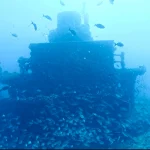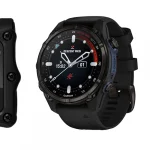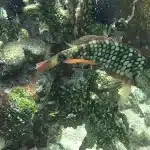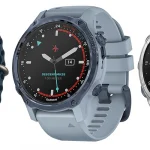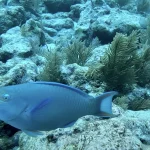Table of Contents
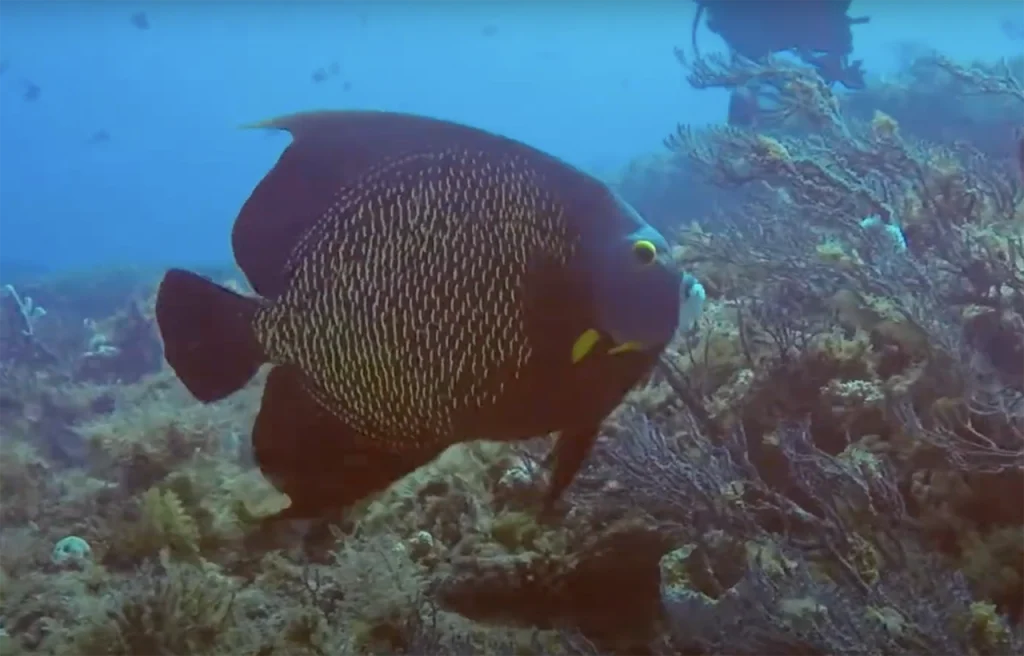
Coral Cove Park is a fantastic spot for both novice snorkelers and experienced divers seeking to explore Florida’s coastal marine life.
Article at a Glance
Location: Coral Cove Park is situated in Tequesta, Florida, featuring a stunning coral reef and rocky formations ideal for underwater exploration.
Depth: The diving areas range from 2 to 15 feet (0.6 to 4.5 meters), making it accessible for both beginners and advanced divers.
Visibility: Visibility typically ranges from 10 to 30 feet (3 to 9 meters), with clearer conditions usually found during late spring and summer.
Best Time to Dive: The optimal diving season is from May to September, when water temperatures are warmer and marine life is more abundant.
Marine Life: Divers can expect to see a variety of species, including colorful tropical fish, sea turtles, rays, and occasionally nurse sharks.
Amenities: The park offers facilities such as restrooms, showers, and picnic areas, enhancing the overall visitor experience.
Suitability: Coral Cove Park is suitable for all skill levels, providing opportunities for beginners to learn and for advanced divers to explore diverse underwater terrains.
Coral Cove Park Reef Jupiter
Coral Cove Park, located in Tequesta, Florida, is a popular destination for diving and snorkeling enthusiasts.
Overview of Coral Cove Park
- Location: 19450 County Hwy 707, Tequesta, FL 33469
- Features:
- 600 feet of guarded beach
- 2,010 feet of unguarded beach
- Picnic areas and restroom facilities
Diving Conditions
- Depth: The waters around Coral Cove typically range from 2 to 6 feet deep, making it accessible for snorkelers and divers alike.
- Visibility: The water is often described as clear and clean, providing excellent visibility for underwater exploration.
Marine Ecosystem
Coral Cove Park is known for its rocky reefs that provide habitats for various marine species. While the park may not have extensive living coral formations, the underwater landscape offers significant relief and is conducive to spotting diverse marine life.
Activities
- Snorkeling: Many visitors report successful snorkeling experiences right off the beach, often seeing vibrant fish just a few feet from shore. The rocky formations enhance the snorkeling experience by creating an engaging environment to explore.
- Diving: For those interested in scuba diving, nearby dive shops like Jupiter Dive Center and others offer guided tours and equipment rentals. These services cater to both beginners and experienced divers looking to explore local reefs and wrecks.
Recommendations
For an optimal experience:
- Best Time to Visit: Calm summer days are ideal for snorkeling due to better water conditions. Low tide can also enhance visibility around the rocks.
- Safety Precautions: Visitors are advised to wear water shoes due to potential sharp rocks in the area. Always check local conditions before entering the water.
What Marine Life Can I Expect To See?
- Tropical Fish:
- Parrotfish: Known for their bright colors and beak-like mouths, these fish are often seen grazing on algae.
- Angelfish: Recognizable by their striking patterns and colors, angelfish are a delight to spot.
- Sergeant Majors: These small fish are easily identifiable by their vertical black stripes.
- Larger Marine Animals:
- Sea Turtles: Various species, including loggerhead turtles, can occasionally be spotted in the area.
- Rays: Look out for stingrays gliding along the sandy bottoms.
- Nurse Sharks: While not commonly seen, they may be encountered resting on the ocean floor.
- Other Marine Life:
- Eels: These can often be found hiding in crevices among the rocks.
- Marine Worms: Various species inhabit the sandy and rocky substrates.
- Crustaceans: Rock pools near the shore are home to crabs and other crustaceans, making them great for tide pooling.
Unique Features of Coral Cove Park
The park’s geological formations create ideal habitats for these species. The clear, calm waters (ranging from 2 to 6 feet deep) enhance visibility for snorkelers and divers, allowing for an immersive experience with the marine environment. Additionally, the park is known for its beautiful rock formations that attract various aquatic life, making it a prime spot for both snorkeling and photography.
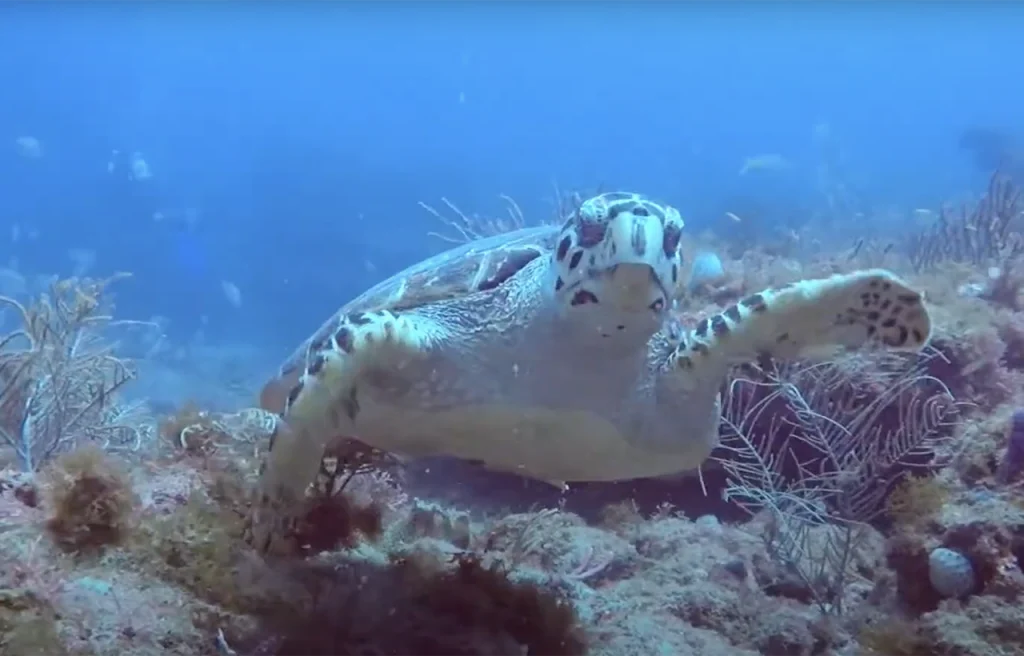
What Do Divers Say About This Site?
Positive Aspects
- Abundant Marine Life: Many divers appreciate the park for its rich biodiversity. Reviewers mention encountering a variety of colorful fish, including parrotfish, angelfish, and sergeant majors, as well as larger species like sea turtles and rays. The clear waters make it easy to observe these creatures up close.
- Accessibility: The shallow depth (ranging from 2 to 6 feet) is often noted as a significant advantage for both novice and experienced snorkelers. This makes it an ideal spot for families and those new to snorkeling.
- Scenic Environment: Divers enjoy the beautiful rock formations that create an engaging underwater landscape. The combination of rocky reefs and sandy flats provides a visually appealing setting for exploration.
Challenges
- Rough Conditions: Some visitors have reported that the beach can be affected by rough seas, which may pose risks when navigating around submerged rocks. Reviewers advise caution, especially on days with strong waves, as injuries can occur from falls or sharp rocks.
- Rocky Terrain: The rocky nature of the beach and underwater environment can be challenging. Divers recommend wearing water shoes to protect against cuts and scrapes from sharp rocks.
- Variable Visibility: While many have experienced clear waters, some divers note that visibility can vary depending on weather conditions and tides, which may affect the overall experience.
Key Information
| Category | Details |
|---|---|
| Location | Tequesta, Florida |
| Type of Site | Coral reef and rocky formations |
| Depth Range | 2 to 15 feet (0.6 to 4.5 meters) |
| Visibility | 10 to 30 feet (3 to 9 meters), varies with conditions |
| Water Temperature | 75°F to 85°F (24°C to 29°C) during peak season |
| Best Time to Dive | Late spring to early fall (May to September) |
| Marine Life | Tropical fish, sea turtles, rays, nurse sharks |
| Entry Points | Rocky shoreline with easy access |
| Suitable For | Beginners and advanced divers |
| Amenities | Restrooms, showers, picnic areas |
| Nearby Attractions | Blowing Rocks Preserve, other local dive sites |
| Local Dive Shops | Jupiter Dive Center and others offer rentals and tours |
| Environmental Considerations | Practice responsible diving; avoid touching corals |
Highlights of Diving This Site?
- Diverse Marine Life: Divers can expect to see a wide variety of marine species, including colorful tropical fish like parrotfish, angelfish, and sergeant majors. The area is also home to sea turtles, rays, and occasionally nurse sharks, making each dive an exciting opportunity to observe these creatures in their natural habitat.
- Clear Waters: When conditions are right, the waters at Coral Cove Park are crystal clear, providing excellent visibility for divers. This clarity enhances the overall experience, allowing for better observation of marine life and underwater landscapes.
- Rocky Reef Structures: The park features unique rocky formations that create diverse ecosystems. These structures attract a multitude of fish and provide hiding spots for eels and octopuses. The rocky terrain also offers interesting topography for divers to explore.
- Accessibility: With shallow depths ranging from 2 to 6 feet, Coral Cove Park is accessible for both novice and experienced divers. This makes it an ideal spot for families and those new to diving or snorkeling.
- Scenic Beauty: The combination of beautiful rock formations and the surrounding beach environment adds to the allure of diving here. Many divers appreciate the picturesque setting, which includes opportunities for photography above and below the water.
- Less Crowded: Compared to other popular diving spots, Coral Cove Park tends to be less crowded, allowing for a more peaceful diving experience. This seclusion is often highlighted as a significant advantage by visitors who prefer quieter environments.
My Favorite Dive Computers
I have compared the 3 top diving computers for each category to help making the right choice easier:
Iconic Spots At This Site
- Rock Formations: The park is famous for its dramatic rock formations, primarily composed of Anastasia limestone. These formations create a rugged coastline with notched cliffs and small caves, providing excellent opportunities for exploration and photography. The rocks are often described as having a “Swiss-cheese” appearance due to erosion, creating interesting textures and shapes.
- Tide Pools: At low tide, the rocky areas reveal numerous tide pools teeming with marine life. These pools are perfect for families and children to explore, offering a chance to observe various crustaceans and small fish in their natural habitat. The tide pools are a highlight for those interested in marine ecology.
- Double Sea Arch: A notable geological feature at Coral Cove Park is the double sea arch, which can be seen at most times but is largely covered during high tide. This natural formation adds to the park’s charm and provides a unique backdrop for photos.
- Blowing Rocks Preserve: Located just north of Coral Cove Park, this preserve features even more dramatic rock formations that can shoot water up to 50 feet in the air during high tide. It’s an excellent spot for those looking to extend their exploration beyond Coral Cove.
- Marine Life Viewing Areas: The park offers great spots for snorkeling and diving, where visitors can encounter a variety of fish species, sea turtles, rays, and other marine creatures. The clear, shallow waters (ranging from 2 to 6 feet) make it an accessible site for observing underwater life.
- Scenic Beachfront: The park boasts approximately 2,610 feet of beach frontage that provides beautiful ocean views. Visitors can enjoy sunbathing, picnicking, and beachcombing along this picturesque stretch of coastline.
- Shell Collecting: Coral Cove Park is known for its abundance of seashells along the beach. This makes it a popular spot for shell collectors looking to find unique specimens while enjoying the coastal environment.
Environmental Conservation Efforts at Coral Cove Park Reef
Florida Coral Rescue Center (FCRC)
The FCRC in Orlando is a state-of-the-art facility established for gene banking and care of Florida corals rescued from reefs affected by stony coral tissue loss disease (SCTLD).This center, the largest of its kind in the U.S., provides a safe environment for coral colonies and plays a significant role in preserving Florida’s Coral Reef (1).
Coral Nurture Program
Similar to efforts in the Great Barrier Reef, programs like the Coral Nurture Program could be implemented at Coral Cove Park (2). This approach involves:
- Collecting broken coral fragments
- Attaching them to underwater frames for faster growth
- Out-planting them back onto the reef
Local Conservation Initiatives
Many local conservation groups have formed to raise public awareness and promote responsible interaction with coral reefs (3)(4)(5). These efforts often include:
- Implementing fishing quotas and protected areas
- Educating citizens about sustainable fishing practices
- Promoting responsible marine tourism
Climate Change Mitigation
To address the challenges posed by climate change, conservation efforts may focus on (3)(4)(5):
- Creating aquatic “refuges” where corals are left undisturbed
- Reducing emissions and countering climate change effects on fragile ecosystems
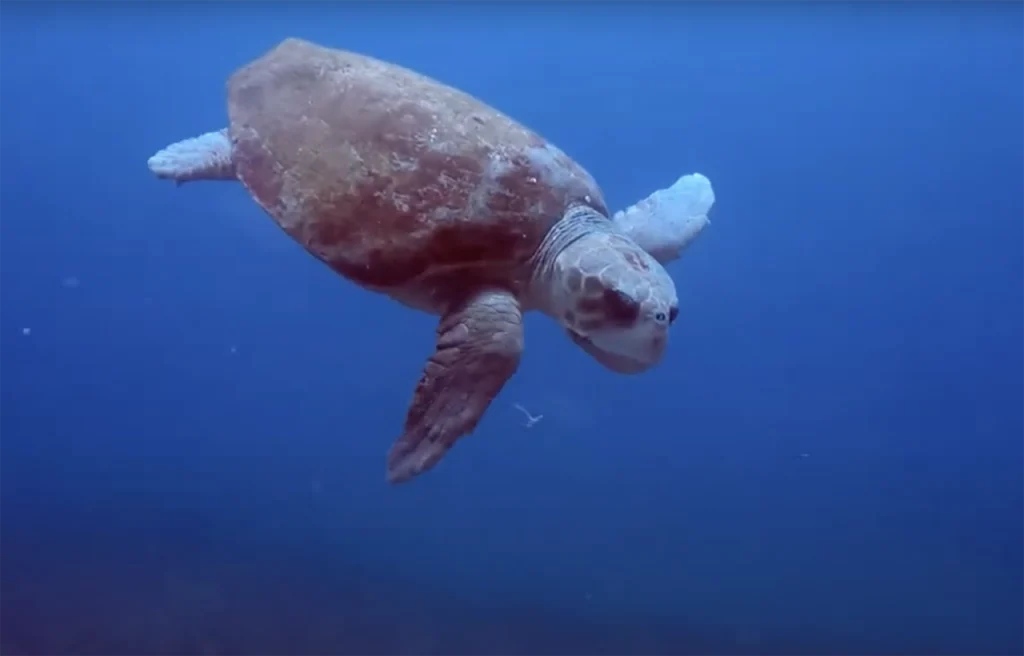
Maximizing Your Diving Experience at Coral Cove Park
- Understand the Conditions: Before diving, check the weather and water conditions. Coral Cove Park can experience strong currents, especially during certain tides. Choosing a calm day will provide better visibility and a safer experience.
- Explore the Rock Formations: The park is known for its unique limestone rock formations, which create diverse habitats for marine life. Spend time exploring these structures, as they attract various species including colorful reef fish, sea turtles, and eels. Look for hidden spots where creatures like octopuses may be hiding.
- Timing Your Visit: Early mornings or late afternoons often provide the best light for underwater photography and increased marine activity. Additionally, visiting during low tide can expose more of the rocky areas and tide pools, enhancing your exploration opportunities.
- Bring the Right Gear: Ensure you have appropriate snorkeling or diving gear. If you’re not equipped, local shops offer rentals. Consider bringing a dive flag to signal your presence to boaters when snorkeling.
- Practice Responsible Diving: Follow guidelines for marine conservation by avoiding touching or disturbing marine life and coral. Feeding wildlife is prohibited in the park, which helps maintain a natural ecosystem.
- Engage with Local Dive Shops: Consider joining guided tours offered by local dive shops such as Jupiter Dive Center. They can provide valuable insights about the best dive spots, safety tips, and help you discover hidden gems in the area.
- Take Advantage of Amenities: Coral Cove Park offers amenities such as restrooms, showers, and picnic areas. Use these facilities to prepare before diving and relax afterward while enjoying a meal or refreshments.
Highlights of Coral Cove Park
- Rich Marine Biodiversity: Expect to see a variety of marine life including parrotfish, angel fish, rays, and possibly even manatees and sea turtles. The shallow waters (2 to 6 feet) make it an ideal spot for both beginners and experienced divers.
- Tide Pools: During low tide, explore the tide pools along the rocky shore where you can find small fish, crabs, and other marine organisms. This is also a great opportunity for families to introduce children to marine life.
- Scenic Views: The park’s beautiful beach provides stunning views of sunrises and sunsets. Take time to enjoy the scenery above water before or after your diving adventure.
- Nearby Attractions: Consider extending your visit by exploring nearby dive sites such as Blowing Rocks Preserve or other local reefs that offer different underwater experiences.
Capturing Memories at Coral Cove Park: Photography Tips
Choose the Right Equipment
- Camera: A waterproof camera or a housing for your DSLR is essential. Consider using a wide-angle lens (16-35mm) for capturing expansive reefscapes and larger marine life, or a macro lens for detailed shots of smaller creatures.
- Lighting: Natural light is ideal for shallow water photography. If diving deeper, consider using strobes or underwater lights to enhance colors and reduce backscatter. Position your lights to avoid shadows and illuminate the subject effectively (6).
Get Close to Your Subject
- Water reduces color and clarity, so aim to get within 12 inches of your subject. This proximity enhances detail and vibrancy in your photos6. Avoid shooting “down” at subjects; instead, shoot at their eye level for more engaging compositions.
Use Natural Light Wisely
- The best times for underwater photography are during sunny days when visibility is high. Shoot with the sun behind you to achieve a beautiful blue background and soft colors in your images. Early mornings or late afternoons can provide softer light conditions that enhance underwater scenes (5).
Master Composition Techniques
- Fill the frame with your subject and avoid centering it; use the rule of thirds for more dynamic images. Look for interesting angles and perspectives, such as shooting upwards from below a coral formation to capture the play of light through the water.
Be Patient and Observant
- Take time to observe marine life before attempting to photograph them. This patience can lead to better compositions as you anticipate their movements. For example, wait for fish to swim into your frame rather than chasing them.
Maintain Good Buoyancy Control
- Good buoyancy control is crucial in underwater photography to avoid disturbing the reef and marine life. Practice hovering in one spot without kicking up sediment, which can obscure visibility.
Protect Your Gear
- Keep lens cloths handy to wipe off any saltwater splashes on your camera lens. Rinse your gear with freshwater after diving to prevent salt buildup and corrosion.Ensure all seals are intact before entering the water.
Experiment with Different Techniques
- Try various shooting techniques, such as capturing wide-angle shots of coral reefs or close-ups of individual fish. Don’t hesitate to experiment with angles, lighting, and settings to find what works best in different conditions.
Respect Marine Life
- Always prioritize the well-being of marine life. Avoid touching or disturbing corals and other organisms, which can harm delicate ecosystems. Use a zoom lens if necessary to capture images from a safe distance.
Frequently Asked Questions
When is the best time to dive Coral Cove Park?
The best time to dive at Coral Cove Park is generally during the late spring to early fall months, particularly from May to September. During this period, the weather is typically more stable, with warmer water temperatures and better visibility, making it ideal for both snorkeling and diving.
Key Considerations for Timing Your Dive
– Water Temperature: The sea temperature during these months averages between 75°F to 85°F (24°C to 29°C), providing comfortable conditions for divers and snorkelers.
– Visibility: Visibility tends to be clearer during the warmer months, especially in late spring and summer. This enhances the underwater experience, allowing for better photography and marine life observation.
– Weather Conditions: The late spring and summer months generally offer calmer seas, which are preferable for diving. However, it’s essential to check local forecasts as conditions can vary.
– Marine Life Activity: Warmer waters attract a variety of marine species, and divers can expect to see an abundance of tropical fish, sea turtles, and possibly even rays during these months.
Additional Tips
– Avoiding Crowds: Weekdays are typically less crowded than weekends, providing a more serene diving experience.
– Tide Awareness: Pay attention to tide schedules; low tides can expose more rocky areas for exploration and improve access to marine life habitats.
What is the visibility like while diving Coral Cove Park?
The visibility while diving at Coral Cove Park can vary significantly based on environmental conditions, but it generally ranges from 10 to 30 feet (3 to 9 meters).
Typical Visibility: Under ideal conditions, divers can expect visibility to be around 10 to 30 feet. However, this can fluctuate depending on factors such as weather, tides, and water clarity after rainfall or storms.
Environmental Impact: Visibility tends to improve during calm weather conditions and decreases after heavy rains or storms due to runoff that can introduce sediment into the water. Therefore, it’s advisable to check weather conditions before planning a dive.
Best Conditions: The best visibility is often found in the late spring and summer months when the waters are warmer and calmer, providing clearer conditions for underwater exploration.
How deep are the dives at Coral Cove Park?
Diving at Coral Cove Park typically involves shallow depths, making it accessible for divers of all skill levels. The depth generally ranges from 2 to 15 feet (approximately 0.6 to 4.5 meters), with the shallowest areas being ideal for snorkeling and beginner divers.
Depth Overview
– Shallow Areas: Many parts of the reef are only a couple of feet deep, allowing for easy exploration and a safe environment for novice snorkelers and divers.
– Maximum Depth: The deeper sections can reach up to about 10 to 15 feet, providing opportunities to explore more diverse marine life while still remaining within a manageable depth range.
Is Coral Cove Park suitable for beginners?
Coral Cove Park is indeed suitable for beginners, making it an excellent choice for novice divers and snorkelers.
Beginner-Friendly Features
Shallow Depths: The diving areas at Coral Cove Park generally range from 2 to 15 feet (approximately 0.6 to 4.5 meters). This shallow depth allows beginners to gain confidence in the water without the pressure of deeper dives.
Calm Waters: The park often experiences calm sea conditions, particularly during the late spring and summer months. This stability is ideal for new divers who may be apprehensive about rough waters.
Abundant Marine Life: Beginners can enjoy a rich underwater environment filled with vibrant marine life, including colorful fish, sea turtles, and rays. This diversity enhances the experience and provides opportunities for exciting wildlife encounters.
Easy Entry: The rocky shoreline allows for easy entry into the water, making it accessible for snorkelers and divers alike. The gradual slope of the reef provides a safe environment for those learning to dive.
Snorkeling Opportunities: For those who may not be ready to dive, Coral Cove Park offers excellent snorkeling conditions. The shallow waters are perfect for observing marine life from the surface, making it a great introduction to underwater exploration.
Local Dive Shops: Nearby dive shops provide guided tours and instruction for beginners, ensuring a safe and informative experience. They can help new divers learn essential skills and familiarize themselves with the local environment.
Is Coral Cove Park suitable for advanced divers?
Coral Cove Park is suitable for advanced divers, but there are certain aspects to consider.
Features for Advanced Divers
Diverse Underwater Terrain: The park offers a variety of underwater landscapes, including rocky reefs and ledges, which can provide more challenging diving experiences. Advanced divers can explore deeper areas and navigate the intricate rock formations that attract diverse marine life.
Marine Life Encounters: Advanced divers may have opportunities to see larger species such as rays and sea turtles, as well as various reef fish. The diversity of marine life in the area can make for exciting encounters.
Variable Conditions: While the shallow depths (typically 2 to 15 feet) make it accessible for beginners, advanced divers may appreciate the opportunity to dive during varying conditions, which can include stronger currents or different visibility levels. This allows for skill development in handling more challenging diving situations.
Exploration Potential: Advanced divers can take advantage of the surrounding areas and nearby dive sites that may offer deeper dives or more complex underwater environments, broadening their diving experience beyond Coral Cove Park itself.
Considerations
Safety Awareness: Advanced divers should always be aware of local conditions, including tides and weather patterns, which can impact diving safety. The park is generally calm but can experience changes that require careful planning.
Environmental Responsibility: As with any diving location, advanced divers should practice responsible diving techniques to protect the delicate marine ecosystem at Coral Cove Park.
Jupiter Dive Sites
- Area 51
- Area 29
- Tunnels
- Loggerhead Reef
- Bluffs Reef
- Bonnies
- Captain Kurls
- Spadefish Point
- Coral Cove Park
- Captain Mike’s
- Julies
- Emerald Charters Shark Dive
- Jupiter Wreck Trek
- Donut
- Scarface Reef Andrew “Red” Harris No Shoes Reef
- Jupiter Inlet
- Step Reef
- Sawfish Bay
- Marine Restoration Reef
- North County Reef
- Lighthouse
- Finz Den
- High Ledge
- Leigh’s Ledge
- Monkey’s Ledge
- Gary’s

